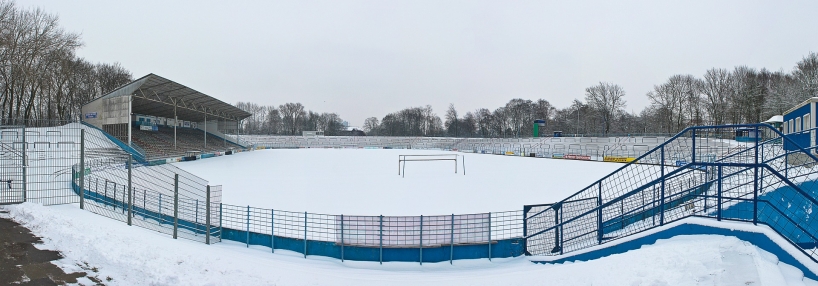
September 3rd, 2018 by
If you’re a groundsperson who has to look after a sports pitch, whether it’s for professionals or for the community, then winter is always a trying time. As the light fades and the weather gets colder and colder, the sports seasons roll on without pause, meaning it’s a tough time for your grass. Your sports pitch needs all the help it can get through the cold winter months, so read on for some easy advice. If you’re looking for turf care tips to help you across the rest of the year, check out our guides to caring for a sports pitch in summer and autumn.
Caring for Turf in December
Iron sulphate is the perfect grass feed to get you through the winter months The key thing to watch out for in December is the fading light. For pitches that happen to be under a shadow in the day, the short daylight hours often mean that they can go for days at a time without getting any light. Unfortunately, there isn’t much you can do about this, so you need to make sure everything else is taken care of to mitigate this.
Step 1: Use Iron Sulphate to Feed Your Turf
As your lawn will be getting progressively less sunlight throughout December, it’s the best month in winter to feed your lawn with some iron sulphate. Iron sulphate will help your grass stay strong and playable despite the lack of sunlight, cold weather, and constant damage from playing.
Step 2: Keep on Top of Post-Match Repairs
This is the most important time of year for post-match repairs. Divot, scarify, and rake your turf regularly to try and keep it smooth. Try and keep training sessions away from areas like the penalty spot, goalmouth, or try line as these areas are likely to need the most attention.
Step 3: Apply Sand (But Only if You Have Good Drainage)
Apply sand to your turf to help level off low areas of grass and keep your turf even and playable. Note that you should only do this if you’ve got well-draining soil, otherwise using sand will just cause more harm than good.
Caring for Turf in January
 Turf care is more important than even in January as your pitch can become an unplayable muddy swamp The new year brings with it new challenges, but you should still keep up the good work by regularly maintaining your turf. The days will gradually start to get longer in January, but the harsh weather means you can’t let up when it comes to sports pitch maintenance.
Turf care is more important than even in January as your pitch can become an unplayable muddy swamp The new year brings with it new challenges, but you should still keep up the good work by regularly maintaining your turf. The days will gradually start to get longer in January, but the harsh weather means you can’t let up when it comes to sports pitch maintenance.
Step 1: Cover Your Pitch on Frosty Nights
When frost is forecast, cover your turf overnight. This will help mitigate some of the damage done by frost. If you can’t cover your whole pitch, just cover areas that tend to get damaged easiest, such as goalmouth areas. If your pitch is affected by frost, stay off it until the frost has cleared. If you’ve used iron sulphate recently, this will help your grass fight off frost much easier on its own, and stepping on frosty grass can damage the blades.
Step 2: Slit, Spike, and Aerate
Slit and spike your turf regularly to help the roots of the grass breathe. January sees a lot of heavy rain, ice, and snow, meaning your turf can become sodden and lacking in oxygen. Aerating your turf will relieve compaction, improve drainage, and should help stop your pitch from becoming a muddy bog.
Caring for Turf in February
 Areas that see a lot of abuse, such as the goalmouth, need a bit of extra attention February sees the weather start to warm up, and the sports season still shows no signs of cooling off. If you don’t manage those two factors properly, it can spell bad news for your sports pitch, so make sure you keep on top of your turf maintenance.
Areas that see a lot of abuse, such as the goalmouth, need a bit of extra attention February sees the weather start to warm up, and the sports season still shows no signs of cooling off. If you don’t manage those two factors properly, it can spell bad news for your sports pitch, so make sure you keep on top of your turf maintenance.
Step 1: Watch for Diseases
Your turf will be under a lot of strain from the cold winter months it’s just been through, so you might think milder weather would be good for it. However, weakened grass combined with warmer weather mean fungal lawn diseases are rife in February. Keep an eye out for common diseases such as red thread and fusarium which can quickly destroy your turf if you’re not careful. For more information, read our guide on common grass diseases.
Step 2: Re-Sow and Recover
With spring just around the corner, February is a good time of year for sowing new grass seed. If the weather is mild enough, sow new seeds around any bare patches, water them regularly, and consider helping them along with a dose of iron sulphate. All of these steps should help you prepare your sports pitch for spring and put you in a good spot for when the season ends.
Comments
Leave a reply
Your e-mail address will not be published. All fields are required


